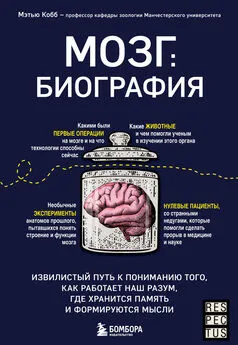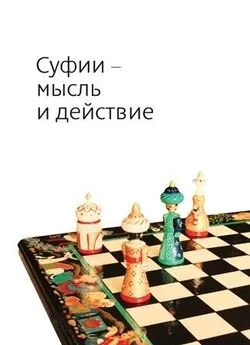Барбара Тверски - Ум в движении [Как действие формирует мысль] [litres]
- Название:Ум в движении [Как действие формирует мысль] [litres]
- Автор:
- Жанр:
- Издательство:Литагент Альпина
- Год:2020
- Город:Москва
- ISBN:978-5-0013-9354-2
- Рейтинг:
- Избранное:Добавить в избранное
-
Отзывы:
-
Ваша оценка:
Барбара Тверски - Ум в движении [Как действие формирует мысль] [litres] краткое содержание
Книга известного когнитивного психолога Барбары Тверски посвящена пространственному мышлению. Это мышление включает в себя конструирование «в голове» и работу с образами в отношении не только физического пространства, но и других его видов – пространств социального взаимодействия и коммуникации, жестов, речи, рисунков, схем и карт, абстрактных построений и бесконечного поля креативности. Ключевая идея книги как раз и состоит в том, что пространственное мышление является базовым, оно лежит в основе всех сфер нашей деятельности и всех ситуаций, в которые мы вовлекаемся.
Доступное и насыщенное юмором изложение серьезного, для многих абсолютно нового материала, а также прекрасные иллюстрации привлекут внимание самых взыскательных читателей. Они найдут в книге как увлекательную конкретную информацию о работе и развитии пространственного мышления, так и важные обобщения высокого уровня, воплощенные в девять законов когниции.
Ум в движении [Как действие формирует мысль] [litres] - читать онлайн бесплатно ознакомительный отрывок
Интервал:
Закладка:
Quallo, M. M., Price, C. J., Ueno, K., Asamizuya, T., Cheng, K., Lemon, R. N., & Iriki, A. (2009). Gray and white matter changes associated with tool-use learning in macaque monkeys. Proceedings of the National Academy of Sciences , 106(43), 18379–18384.
Принадлежность резиновой руки
Beauchamp, M. S. (2005). See me, hear me, touch me: Multisensory integration in lateral occipital-temporal cortex. Current Opinion in Neurobiology , 15(2), 145–153.
Botvinick, M., & Cohen, J. (1998). Rubber hands “feel” touch that eyes see. Nature , 391(6669), 756–756.
Ehrsson, H. H., Wiech, K., Weiskopf, N., Dolan, R. J., & Passingham, R. E. (2007). Threatening a rubber hand that you feel is yours elicits a cortical anxiety response. Proceedings of the National Academy of Sciences , 104(23), 9828–9833.
Как младенцы понимают целенаправленное поведение
Falck-Ytter, T., Gredebäck, G., & von Hofsten, C. (2006). Infants predict other people’s action goals. Nature Neuroscience , 9(7), 878–879.
Sommerville, J. A., & Woodward, A. L. (2005). Pulling out the intentional structure of action: The relation between action processing and action production in infancy. Cognition , 95(1), 1–30.
Sommerville, J. A., Woodward, A. L., & Needham, A. (2005). Action experience alters 3-month-old infants’ perception of others’ actions. Cognition , 96(1), B1–B11.
Зеркальные нейроны
Rizzolatti, G. (2005). The mirror neuron system and imitation. Perspectives on Imitation: Mechanisms of Imitation and Imitation in Animals , 1, 55.
Rizzolatti, G., Fadiga, L., Gallese, V., & Fogassi, L. (1996). Premotor cortex and the recognition of motor actions. Cognitive Brain Research , 3(2), 131–141.
Двигательный резонанс
Fadiga, L., Craighero, L., & Olivier, E. (2005). Human motor cortex excitability during the perception of others’ action. Current Opinion in Neurobiology , 15(2), 213–218.
Iacoboni, M. (2009). Imitation, empathy, and mirror neurons. Annual Review of Psychology , 60, 653–670.
Iacoboni, M. (2009). Mirroring people: The science of empathy and how we connect with others . New York, NY: Picador.
Зеркальные нейроны у людей
Mukamel, R., Ekstrom, A. D., Kaplan, J., Iacoboni, M., & Fried, I. (2010). Single-neuron responses in humans during execution and observation of actions. Current Biology , 20, 750–756.
Дети распознают живое по траекториям движения
Gelman, R., Durgin, F., & Kaufman, L. (1996). Distinguishing between animates and inanimates: Not by motion alone. In D. Sperber, D. Premack, & A. J. Premack (Eds.), Causal Cognition: A Multidisciplinary Debate (pp. 150–184). Oxford, England: Clarendon Press.
Мозг экспертов острее реагирует на наблюдаемое действие
Calvo-Merino, B., Glaser, D. E., Grezes, J., Passingham, R. E., & Haggard, P. (2005). Action observation and acquired motor skills: An FMRI study with expert dancers. Cerebral Cortex , 15(8), 1243–1249.
Игроки лучше тренеров предсказывают результаты свободного броска
Aglioti, S. M., Cesari, P., Romani, M., & Urgesi, C. (2008). Action anticipation and motor resonance in elite basketball players. Nature Neuroscience , 11(9), 1109–1116.
Knoblich, G., Butterfill, S., & Sebanz, N. (2011). Psychological research on joint action: Theory and data. Psychology of Learning and Motivation , 54, 59–101.
Понимание движения по фонарикам на двигающихся суставах
Johansson, G. (1973). Visual perception of biological motion and a model for its analysis. Perception & Psychophysics , 14(2), 201–211.
Kozlowski, L. T., & Cutting, J. E. (1977). Recognizing the sex of a walker from a dynamic point-light display. Perception & Psychophysics , 21(6), 575–580.
По наблюдаемому движению легче узнать себя, чем других
Loula, F., Prasad, S., Harber, K., & Shiffrar, M. (2005). Recognizing people from their movement. Journal of Experimental Psychology: Human Perception and Performance , 31, 210.
Синхронизация своих действий с чужими
Neda, Z., Ravasz, E., Brechte, Y., Vicsek, T., & Barabasi, A.-L. (2000). The sound of many hands clapping. Nature , 403, 849–850.
van Ulzen, N. R., Lamoth, C. J., Daffertshofer, A., Semin, G. R., & Beek, P. J. (2008). Characteristics of instructed and uninstructed interpersonal coordination while walking side-by-side. Neuroscience Letters , 432(2), 88–93.
Межвидовая и внутривидовая кооперация
Daura-Jorge, F. G., Cantor, M., Ingram, S. N., Lusseau, D., & Simões-Lopes, P. C. (2012). The structure of a bottlenose dolphin society is coupled to a unique foraging cooperation with artisanal fishermen. Biology Letters , rsbl20120174.
Hare, B., & Woods, V. (2013). The genius of dogs . London, England: Oneworld Publications.
Plotnik, J. M., Lair, R., Suphachoksahakun, W., & De Waal, F. B. (2011). Elephants know when they need a helping trunk in a cooperative task. Proceedings of the National Academy of Sciences , 108(12), 5116–5121.
Tomasello, M. (2009). Why we cooperate . Cambridge, MA: MIT Press.
Tomasello, M., & Vaish, A. (2013). Origins of human cooperation and morality. Annual Review of Psychology , 64, 231–255.
Visco-Comandini, F., Ferrari-Toniolo, S., Satta, E., Papazachariadis, O., Gupta, R., Nalbant, L. E., & Battaglia-Mayer, A. (2015). Do non-human primates cooperate? Evidences of motor coordination during a joint action task in macaque monkeys. Cortex , 70, 115–127.
Координация совместных действий
Knoblich, G., Butterfill, S., & Sebanz, N. (2011). Psychological research on joint action: Theory and data. Psychology of Learning and Motivation , 54, 59–101.
Knoblich, G., & Sebanz, N. (2008). Evolving intentions for social interaction: From entrainment to joint action. Philosophical Transactions of the Royal Society of London B: Biological Sciences , 363(1499), 2021–2031.
Sebanz, N., Bekkering, H., & Knoblich, G. (2006). Joint action: Bodies and minds moving together. Trends in Cognitive Sciences , 10(2), 70–76.
Sebanz, N., Knoblich, G., & Prinz, W. (2005). How two share a task: Corepresenting stimulus-response mappings. Journal of Experimental Psychology: Human Perception and Performance , 31(6), 1234.
Zacks, J. M., Tversky, B., & Iyer, G. (2001). Perceiving, remembering, and communicating structure in events. Journal of Experimental Psychology: General , 130(1), 29.
Связь мозга с мозгом
Frith, U., & Frith, C. (2010). The social brain: Allowing humans to boldly go where no other species has been. Philosophical Transactions of the Royal Society B: Biological Sciences , 365(1537), 165–176.
Hasson, U., Ghazanfar, A. A., Galantucci, B., Garrod, S., & Keysers, C. (2012). Brain-to-brain coupling: A mechanism for creating and sharing a social world. Trends in Cognitive Sciences , 16(2), 114–121.
Hommel, B. (2011). The Simon effect as tool and heuristic. Acta Psychologica , 136(2), 189–202.
Hommel, B., Colzato, L. S., & Van Den Wildenberg, W. P. (2009). How social are task representations? Psychological Science , 20(7), 794–798.
Sebanz, N., Knoblich, G., Prinz, W., & Wascher, E. (2006). Twin peaks: An ERP study of action planning and control in coacting individuals. Journal of Cognitive Neuroscience , 18(5), 859–870.
Сотрудничество с целью создания смысла в ходе разговора
Clark, H. H. (1996). Using language . Cambridge, England: Cambridge University Press.
Подражание способствует симпатии
Chartrand, T. L., & Van Baaren, R. (2009). Human mimicry. Advances in Experimental Social Psychology , 41, 219–274.
Van Baaren, R., Janssen, L., Chartrand, T. L., & Dijksterhuis, A. (2009). Where is the love? The social aspects of mimicry. Philosophical Transactions of the Royal Society of London B: Biological Sciences , 364(1528), 2381–2389.
Быстрые суждения о людях, местах и объектах
Biederman, I. (1972). Perceiving real-world scenes. Science , 177, 77–80.
Fei-Fei, L., Iyer, A., Koch, C., & Perona, P. (2007). What do we perceive in a glance of a real-world scene? Journal of Vision , 7(1), 10–10.
Greene, M. R., & Fei-Fei, L. (2014). Visual categorization is automatic and obligatory: Evidence from Stroop-like paradigm. Journal of Vision , 14(1), 14–14.
Greene, M. R., & Oliva, A. (2009). The briefest of glances: The time course of natural scene understanding. Psychological Science , 20, 464–472. doi:10.1111/j.1467–9280.2009.02316.x.
Hafri, A., Papafragou, A., & Trueswell, J. C. (2013). Getting the gist of events: Recognition of two-participant actions from brief displays. Journal of Experimental Psychology: General , 142(3), 880.
Kahneman, D. (2011). Thinking fast and slow . New York, NY: Farrar, Straus and Giroux.
Kraus, M. W., Park, J. W., & Tan, J. J. (2017). Signs of social class: The experience of economic inequality in everyday life. Perspectives on Psychological Science , 12(3), 422–435.
Potter, M. C., & Levy, E. I. (1969). Recognition memory for a rapid sequence of pictures. Journal of Experimental Psychology , 81, 10–15.
Восстановление зрения
Sinha, P. (2013). Once blind and now they see. Scientific American , 309(1), 48–55.
Von Senden, M. (1960). Space and sight: The perception of space and shape in the congenitally blind before and after operation . London, England: Metheun.
Специализация областей мозга в распознавании людей, мест, объектов
Downing, P. E., Jiang, Y., Shuman, M., & Kanwisher, N. (2001). A cortical area selective for visual processing of the human body. Science , 293(5539), 2470–2473.
Grill-Spector, K., & Weiner, K. S. (2014). The functional architecture of the ventral temporal cortex and its role in categorization. Nature Reviews Neuroscience , 15(8), 536–548.
Kanwisher, N. (2010). Functional specificity in the human brain: A window into the functional architecture of the mind. Proceedings of the National Academy of Sciences , 107(25), 11163–11170.
Weiner, K. S., & Grill-Spector, K. (2013). Neural representations of faces and limbs neighbor in human high-level visual cortex: Evidence for a new organization principle. Psychological Research , 77(1), 74–97.
Экстраординарная память на даты
Читать дальшеИнтервал:
Закладка:
![Обложка книги Барбара Тверски - Ум в движении [Как действие формирует мысль] [litres]](/books/1063976/barbara-tverski-um-v-dvizhenii-kak-dejstvie-formir.webp)
![Барбара Морриган - Сердце, что растопит океан [litres]](/books/1059584/barbara-morrigan-serdce-chto-rastopit-okean-litre.webp)
![Рольф Добелли - Искусство ясно мыслить [litres]](/books/1067492/rolf-dobelli-iskusstvo-yasno-myslit-litres.webp)
![Александр Кондрашов - Жизнь в движении [litres]](/books/1074016/aleksandr-kondrashov-zhizn-v-dvizhenii-litres.webp)
![Мартин Рис - Всего шесть чисел. Главные силы, формирующие Вселенную [litres]](/books/1082236/martin-ris-vsego-shest-chisel-glavnye-sily-formir.webp)
![Джон Гревилл Агард Покок - Момент Макиавелли: Политическая мысль Флоренции и атлантическая республиканская традиция [litres]](/books/1143945/dzhon-grevill-agard-pokok-moment-makiavelli-politi.webp)
![Кира Бег - Король моих мыслей [litres самиздат]](/books/1148970/kira-beg-korol-moih-myslej-litres-samizdat.webp)
![Ива Коде - Мы мыслим… [litres самиздат]](/books/1149538/iva-kode-my-myslim-litres-samizdat.webp)


